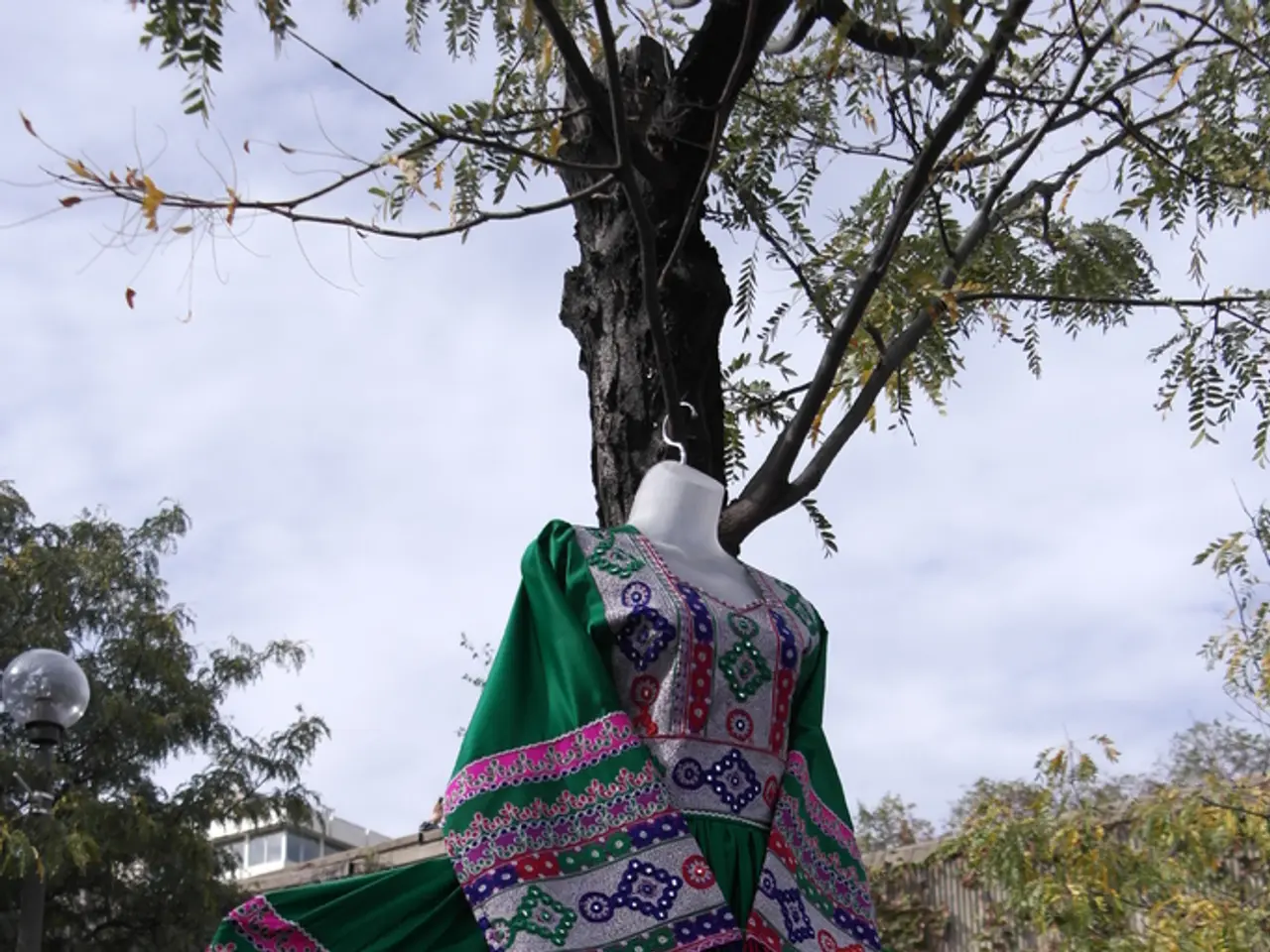Key Insights about AI's Impact in Ready-to-Wear Apparel Industry
The integration of Artificial Intelligence (AI) is revolutionizing the ready-to-wear fashion industry, impacting design, trend forecasting, inventory management, personalized shopping experiences, and operational efficiency.
For designers, AI offers a wealth of tools to accelerate the design process. Generative AI creates visuals and prototypes from text prompts, enabling faster iteration without physical samples. Designers also benefit from real-time insights into emerging trends, colors, fabrics, and style preferences across markets, thanks to massive social media, e-commerce, and streetwear data analysis. This empowers smarter, data-driven creative decisions and helps identify market gaps, reducing risks of flops and fostering innovation.
Retailers are reaping the benefits of AI-powered demand forecasting, minimizing overproduction and inventory markdowns. By accurately predicting styles that will sell, taking into account seasonality, location-based trends, and social media signals, AI ensures a better alignment with consumer demand. AI also optimizes supply chains, warehouse operations, and shipping logistics, resulting in leaner operations, reduced waste, and faster delivery. Retailers are enhancing the shopping experience by implementing AI chatbots and virtual stylists that suggest full outfits dynamically, boosting average order values and customer retention.
Consumers are experiencing a shift towards highly personalized shopping experiences. AI analyses past behaviour, preferences, and contextual data (occasion, weather) to improve product recommendations, reduce decision fatigue, and build brand loyalty. AI-powered virtual stylists create interactive, tailored experiences, increasing shopper engagement, particularly among mobile and younger demographics. Personalized marketing messages further enhance customer satisfaction and relevance.
AI-driven pricing models help ready-to-wear fashion brands set optimal prices based on market demand, competitor pricing, and consumer behaviour. AI-powered virtual try-on solutions and augmented reality (AR) experiences allow customers to visualize ready-to-wear garments on themselves digitally, increasing confidence in online purchases and reducing returns.
AI is also playing a crucial role in promoting sustainability. It can assess the environmental impact of different fabrics, helping brands choose materials that align with sustainability goals while meeting consumer demand. AI can simulate different market scenarios to support decision-making for product launches and promotions. Furthermore, AI supports eco-friendly practices in fashion by monitoring material sourcing, predicting sustainable trends, and optimizing production to reduce waste.
Lastly, AI tools are making ready-to-wear fashion design more accessible to smaller brands and independent designers, fostering creativity, diversity, and innovation. The fusion of data analytics with creativity and operational intelligence is leading to faster, more efficient production cycles, reduced waste, and shopping experiences customized to individual preferences.
In conclusion, AI is transforming the ready-to-wear fashion industry by merging data analytics with creativity and operational intelligence, driving innovation, reducing waste, and providing personalized shopping experiences.
[1] AI in Fashion: A New Era of Personalization and Sustainability. (2021). Retrieved from [https://www.mckinsey.com/industries/retail/our-insights/ai-in-fashion-a-new-era-of-personalization-and-sustainability]
[2] The Future of Fashion: How AI is Changing the Industry. (2020). Retrieved from [https://www.forbes.com/sites/forbesagencycouncil/2020/01/22/the-future-of-fashion-how-ai-is-changing-the-industry/?sh=535e0e7b6171]
[3] The Role of AI in the Fashion Industry. (2019). Retrieved from [https://www.wired.com/story/the-role-of-ai-in-the-fashion-industry/]
[4] AI in Fashion: A Guide. (2020). Retrieved from [https://www.technologyreview.com/s/613613/ai-in-fashion-a-guide/]
[5] How AI is Transforming the Fashion Industry. (2021). Retrieved from [https://www.cio.com/article/3511074/how-ai-is-transforming-the-fashion-industry.html]
[1] Marketing strategies in the fashion-and-beauty industry are evolving with the integration of artificial intelligence (AI), using AI chatbots and virtual stylists to enhance shopping experiences and boost average order values.
[2] The fusion of AI technology with creativity and operational intelligence is driving innovation in the ready-to-wear fashion industry, as it enables faster and smarter design processes, personalized product recommendations, and the identification of market gaps.
[3] AI-driven demand forecasting is revolutionizing inventory management in the retail sector, minimizing overproduction, and optimizing supply chains, warehouse operations, and shipping logistics to create leaner operations and reduced waste.
[4] Artificial intelligence is also instrumental in promoting sustainability in the fashion industry, assessing the environmental impact of different fabrics, monitoring material sourcing, and predicting sustainable trends to support eco-friendly practices.
[5] AI-powered fashion design tools are democratizing the design process, making it more accessible to smaller brands and independent designers, fostering creativity, diversity, and innovation in the ready-to-wear fashion industry.




